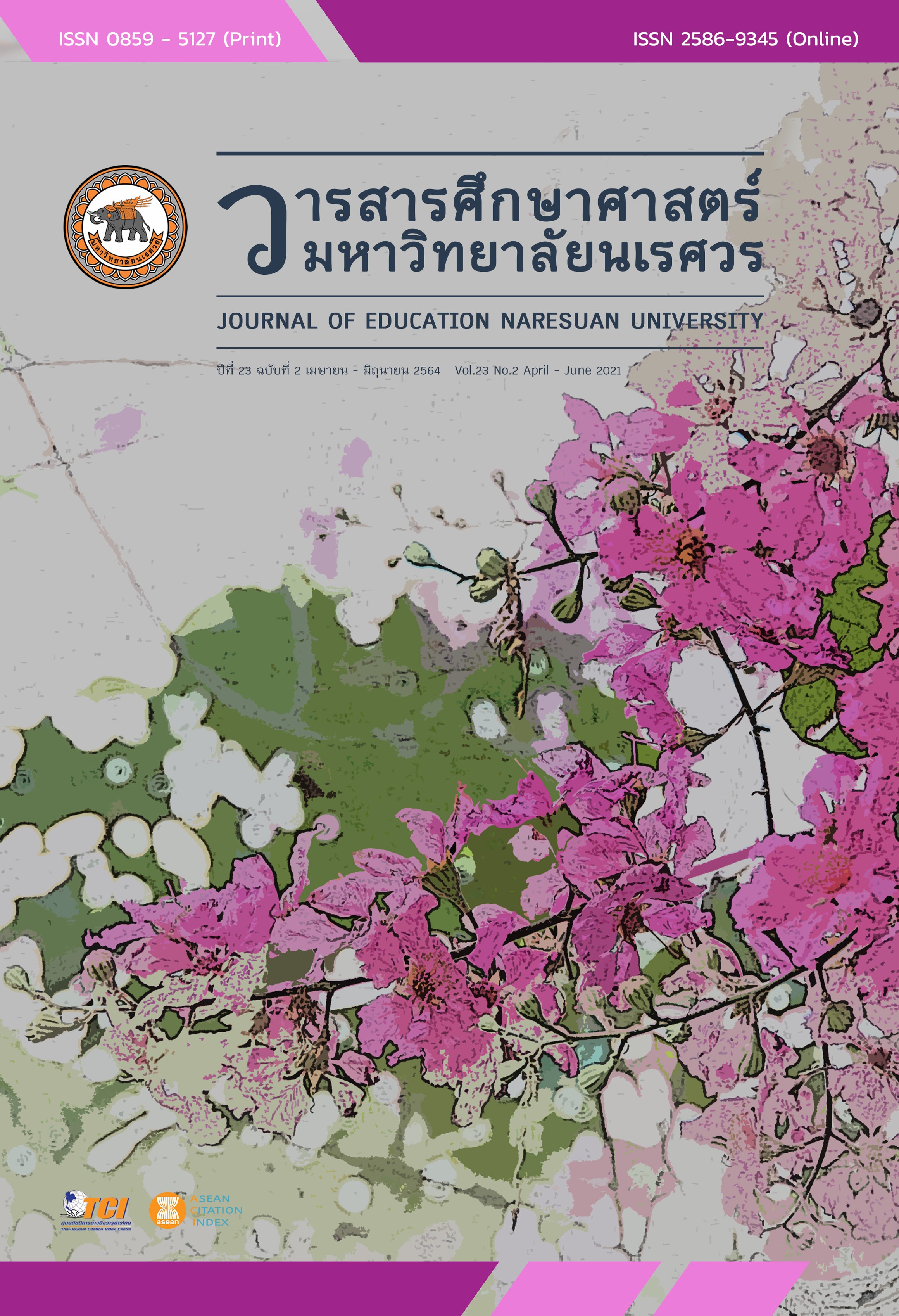CONSTRUCTING TESTS TO EVALUATE THE SKILL OF USING MATHEMATICS IN REAL LIFE OF MATHAYOMSUKSA 3 STUDENTS การสร้างแบบทดสอบวัดทักษะการใช้คณิตศาสตร์ในชีวิต สำหรับนักเรียนชั้นมัธยมศึกษาปีที่ 3
Main Article Content
Abstract
The purposes of this research were to study the status of mathematical content usage following standard and strands from The Basic Education Core Curriculum B.E. 2551 in Mathayomsuksa 3 students’ life, to create and find the quality of the skill of using mathematics in real life test for Mathayomsuksa 3 students, to find the norms of the life mathematical usage skills test and to study the skill of using mathematics in real life of Mathayomsuksa 3 students. The samples were divided to 4 groups by multi-stage sampling; 1) 100 samples answering the questionnaire to study the status of mathematical content usage following standard and strands from The Basic Education Core Curriculum B.E. 2551 in Mathayomsuksa 3 students’ life, 2) 200 samples being used for analysis the quality of the skill of using mathematics in real life test for Mathayomsuksa 3 students through finding difficulty and discrimination, 3) 400 samples being used for finding the skill of using mathematics in real life test for Mathayomsuksa 3 students’ reliability, and 4) 1,000 samples being used for creating the skill of using mathematics in real life test for Mathayomsuksa 3 students’ norms. The findings of the research were as follows:
1. The mathematical content usage following standard and strands from The Basic Education Core Curriculum B.E. 2551 in Mathayomsuksa 3 students’ life that were used to create the skill of using mathematics in real life test consists of 4 strands form 6 strands: 1) Numbers and Operations, 2) Measurement, 3) Algebra, and 4) Analysis and Probability with 8 standards and 18 indicators.
2. The skill of using mathematics in real life test for Mathayomsuksa 3 students was the competency-based situational-multiple choice test with 4 choices that had 40 questions. The content validity indices were .80 to 1.00. The difficulty indices were .34 to .80. The discrimination indices were .23 to .59. The reliability indices were 0.898, and the measurement error was 2.7423.
3. The norms of the skill of using mathematics in real life test for Mathayomsuksa 3 students. The Normalized T-Scores was T29 to T70. and 50 Normalized T-Scores was 21 points of raw score.
4. The skill of using mathematics in real life of Mathayomsuksa 3 students. Most of the students were at a fair level that was 34 percent of the samples. The raw score was 17 to 26 and the Normalized T-Scores was 46 to 55.
Article Details
The owner of the article does not copy or violate any of its copyright. If any copyright infringement occurs or prosecution, in any case, the Editorial Board is not involved in all the rights to the owner of the article to be performed.
References
Chaisuk, J. (1997). Construction of a science process skills test for the lower secondary school students (Master thesis). Chiang Mai: Chiang Mai University. [in Thai]
Office of the Basic Education Commission. (2008). The basic education core curriculum B.E. 2551 (A. D. 2008). Bangkok: Ministry of Education.
Krongsa-ad, S. (2009). Construction of the scholastic aptitude tests to predict learning achievement for Mathayomsuksa 6 students (Master thesis). Chiang Mai: Chiang Mai University. [in Thai]
Kumkuan, S., Nualpang, K., & Angganapattarakajorn, V. (2017). The effect of cognitive guided Instruction learning activities (CGI) on mathematical connection skills and learning achievement on surface areas and volumes of Mathayomsuksa 3 students. Journal of Education Naresuan University, 19(2), 245-259. [in Thai]
Phimsuk, N. (2012). Construction of a mathematics knowledge test for grade 8 students (Master thesis). Phitsanulok: Naresuan University. [in Thai]
Pinyoanuntapong, B. (2002). Criterion-referenced evaluation: Concept and method (2nd ed.). Bangkok: Wattana Panit Printing & Publishing. [in Thai]
Rittison, S. (1994). Construction of test. Bangkok: Faculty of Education, Suan Dusit University. [in Thai]
Saiyos, L., & Saiyos, A. (2010). Educational research technique (11th ed.). Bangkok: Suwiriyasarn. [in Thai]
Samuttai, R. (2002). The basic educational measurement and evaluation. Chiang Mai: Faculty of Education, Chiang Mai University. [in Thai]
Srisuk, K. (2002). The basic educational statistics. Chiang Mai: Chiang Mai University. [in Thai]
The Institute for the Promotion of Teaching Science and Technology. (2003). Mathematics measurement and evaluation handbook. Bangkok: The Institute for the Promotion of Teaching Science and Technology. [in Thai]
The Institute for the Promotion of Teaching Science and Technology. (2003). Science, mathematics and technology study. Bangkok: The Institute for the Promotion of Teaching Science and Technology. [in Thai]
The Institute for the Promotion of Teaching Science and Technology. (2004). Science, mathematics, and technology study. Bangkok: The Institute for the Promotion of Teaching Science and Technology. [in Thai]


